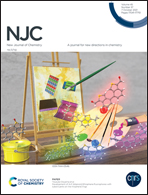Insulation board-derived N/O self-doped porous carbon as an electrode material for high-performance symmetric supercapacitors†
Abstract
The development of highly-efficient and low-cost heteroatom-doped porous carbon materials is vitally important for high-performance supercapacitors. Herein, waste phenolic resin-based insulation boards, which naturally contain N and O elements, were deliberately chosen as an absolute “zero”-cost green raw material for the preparation of heteroatom self-doped porous carbon. Through carbonization and activation steps, N/O self-doped porous carbon with a high surface area has been successfully prepared. The constructed symmetrical supercapacitor based on the best sample thermally activated at 600 °C had a specific capacitance of 262.2 F g−1 at 0.5 A g−1. Furthermore, the output energy density was 17.4 W h kg−1 at a power density of 500 W kg−1. Impressively, a significantly stable cycling duration with almost 100% capacitance retention and coulombic efficiency were retained after running 20 000 cycles. Moreover, it took 150 h to self-discharge to half of its maximum voltage. The prominent performance of the constructed symmetrical supercapacitor was attributed to the large specific surface area, hierarchical pore size distribution, and optimal doped heteroatoms in the carbon matrix. This work uncovers a promising strategy of converting waste construction materials into high-value electrode materials for green energy storage applications, such as supercapacitors.



 Please wait while we load your content...
Please wait while we load your content...